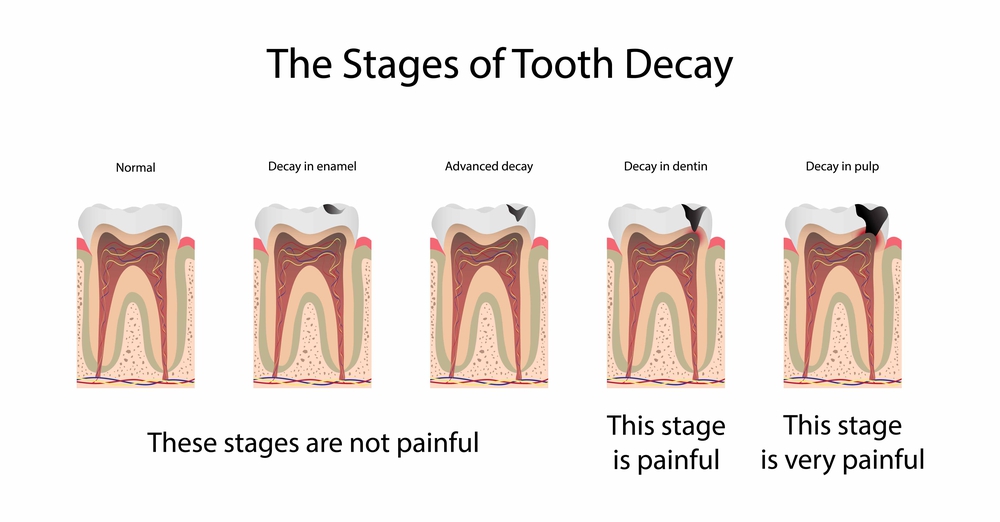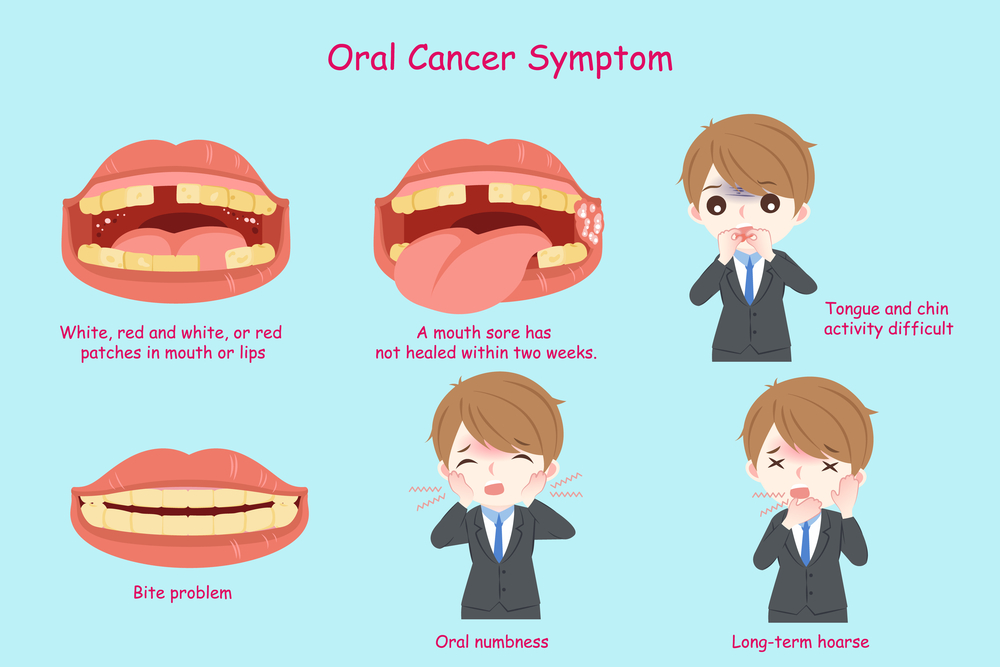
Maintaining good oral health is essential for your overall well-being. Common dental issues, if left untreated, can lead to serious problems that affect not only your teeth and gums but also your general health. In Phoenix, many patients face dental challenges that can be easily managed with the right knowledge and timely intervention.
In this blog, I will cover the most common dental problems encountered by Phoenix residents and provide practical tips on how to address them effectively. By understanding these issues and knowing how to prevent and treat them, you can maintain a healthy, beautiful smile and avoid more complex dental treatments in the future.
Tooth Decay and Cavities

Tooth decay and cavities are among the most common dental issues affecting people of all ages. Understanding their causes and recognizing symptoms early can help prevent severe damage and maintain your oral health. Let’s delve into the details of tooth decay and how to manage it effectively.
Understanding Tooth Decay:
Tooth decay is primarily caused by plaque buildup on your teeth. Plaque produces acids that erode tooth enamel, leading to cavities. The decay process progresses through stages, starting with enamel erosion and eventually advancing to deeper layers of the tooth if left untreated.
- Caused by plaque buildup: Plaque, a sticky “biofilm” of bacteria, produces acids that erode tooth enamel. This process weakens the enamel and makes the teeth susceptible to decay.
- Progression of decay: Tooth decay progresses through stages, starting with enamel erosion. If left untreated, it can advance to deeper layers of the tooth, potentially affecting the dentin and pulp, leading to more severe damage, infection, and pain.
Symptoms:
Recognizing the symptoms of tooth decay early can help you seek treatment before the condition worsens. Common signs include:
- Toothache or pain when biting.
- Spontaneous pain, or throbbing
- Visible holes or pits in the teeth.
- Sensitivity to hot, cold, or sweet foods and drinks.
Prevention and Treatment:
Preventing tooth decay involves maintaining good oral hygiene and regular dental visits. Effective prevention and treatment strategies include:
- Brush teeth twice a day with fluoride toothpaste.
- Floss daily to remove plaque between teeth.
- Regular dental check-ups and cleanings.
- Treatment options include fillings, crowns, and root canals for severe cases.
Gum Disease
Gum disease, also known as periodontal disease, is a common issue that can lead to serious dental problems if left untreated. Early detection and treatment are key to preventing complications such as tooth loss and gum damage. Understanding the stages of gum disease and how to manage it is crucial for maintaining healthy gums.
Overview:
Gum disease ranges from mild gingivitis to severe periodontitis. It is caused by plaque buildup along and under the gum line, which leads to inflammation and infection of the gums.
- Gingivitis: The earliest stage of gum disease, characterized by red, swollen, and bleeding gums. Gingivitis is reversible with good oral hygiene.
- Periodontitis: An advanced stage of gum disease where the inflammation spreads below the gum line, causing the gums to pull away from the teeth, forming pockets that can become infected. This can lead to bone and tooth loss if not treated.
Symptoms:
Recognizing the symptoms of gum disease early can help prevent its progression. Common signs include:
- Red, swollen, or bleeding gums.
- Persistent bad breath.
- Receding gums or loose teeth.
Prevention and Management:
Preventing gum disease involves maintaining good oral hygiene practices and regular dental visits. Effective prevention and management strategies include:
- Maintain good oral hygiene by brushing and flossing daily.
- Regular dental visits for professional cleanings.
- Scaling and root planing procedures for advanced cases.
- Use of antimicrobial mouthwash to reduce bacteria in the mouth.
- Lifestyle changes such as quitting smoking and maintaining a healthy diet to support gum health.
Tooth Sensitivity
Tooth sensitivity can be uncomfortable and affect your quality of life. Identifying the causes and finding the right treatment can help alleviate this issue, allowing you to enjoy your favorite foods and beverages without discomfort.
Causes:
Tooth sensitivity occurs when the underlying layer of your teeth, called dentin, becomes exposed. This can happen due to various factors, such as:
- Worn tooth enamel: Enamel erosion caused by acidic foods and drinks or aggressive brushing.
- Exposed tooth roots: Gum recession exposing the roots of the teeth.
- Tooth decay, fractured teeth, or worn fillings: These issues can expose the dentin, leading to sensitivity.
Symptoms:
Recognizing the symptoms of tooth sensitivity is important for seeking timely treatment. Common signs include:
- Sharp pain when eating or drinking hot, cold, sweet, or acidic foods and beverages.
- Discomfort when brushing or flossing.
- Occasional spontaneous tooth pain without an apparent trigger.
Treatment Options:
Managing tooth sensitivity involves addressing the underlying cause and protecting the teeth from further damage. Effective treatment options include:
- Desensitizing toothpaste: Specially formulated toothpaste can help block the sensation from reaching the tooth nerve.
- Fluoride treatments: Applying fluoride gel or varnish to strengthen tooth enamel and reduce sensitivity.
- Dental bonding or sealants: Covering exposed tooth surfaces to protect against sensitivity.
- Gum grafts: Surgical procedures to cover exposed roots if gum recession is the cause.
- Root canal therapy: In severe cases where sensitivity is due to nerve damage, a root canal may be necessary.
Bad Breath (Halitosis)

Bad breath, or halitosis, can be embarrassing and impact your social interactions. Understanding the causes and remedies for bad breath can help you manage and prevent this issue, ensuring fresh breath and confidence.
Causes:
Bad breath can result from various factors, both oral and systemic. Common causes include:
- Poor oral hygiene: Inadequate brushing and flossing allow food particles to remain in the mouth, promoting bacterial growth.
- Food particles and debris: Certain foods, like onions and garlic, can contribute to bad breath.
- Dry mouth: Reduced saliva production, often due to medications or medical conditions, leads to an increased risk of halitosis.
- Medical conditions: Issues such as sinus infections, respiratory infections, and gastrointestinal problems can also cause bad breath.
Symptoms:
Identifying the symptoms of bad breath can help you take the necessary steps to address it. Common signs include:
- Persistent unpleasant odor from the mouth.
- Dry mouth or a sticky feeling in the mouth.
- A bad taste in the mouth.
Prevention and Remedies:
Preventing and treating bad breath involves maintaining good oral hygiene and addressing underlying causes. Effective strategies include:
- Brush and floss daily to remove food particles and plaque.
- Use mouthwash to kill bacteria and freshen breath.
- Stay hydrated and chew sugar-free gum to stimulate saliva production.
- Clean your tongue with a tongue scraper to remove bacteria.
When to See a Dentist:
If bad breath persists despite good oral hygiene, it may indicate an underlying dental or medical condition. Consult your dentist for a thorough evaluation and appropriate treatment.
Tooth Erosion
Tooth erosion occurs when acids wear away the enamel, leading to sensitivity and other dental problems. Protecting your teeth from erosion is crucial for long-term oral health and maintaining a strong, healthy smile.
Understanding Tooth Erosion:
Tooth erosion is caused by the loss of enamel due to exposure to acids from various sources. It can result from dietary habits, medical conditions, and lifestyle factors.
- Dietary acids: Consuming acidic foods and drinks, such as citrus fruits, soda, and wine.
- Acid reflux: Stomach acids reaching the mouth due to gastroesophageal reflux disease (GERD).
- Medications: Certain medications can reduce saliva flow, increasing the risk of erosion.
Symptoms:
Recognizing the symptoms of tooth erosion early can help prevent further damage. Common signs include:
- Sensitivity to temperature changes and sweet foods.
- Discoloration and thinning of teeth.
- Rounded or rough edges on teeth.
Prevention and Treatment:
Preventing tooth erosion involves minimizing exposure to acids and adopting protective measures. Effective prevention and treatment strategies include:
- Limit acidic foods and drinks: Reduce consumption of citrus fruits, soda, and other acidic items.
- Rinse your mouth with water: After consuming acidic substances, rinse with water to neutralize acids.
- Use a straw for acidic beverages: Minimize contact with teeth by drinking through a straw.
- Fluoride treatments: Strengthen enamel with fluoride treatments and toothpaste.
- Dental bonding or veneers: Restore damaged teeth with bonding or veneers to protect against further erosion.
Cracked or Broken Teeth
Cracked or broken teeth can result from trauma, grinding, or biting on hard objects. Prompt treatment is essential to prevent further damage and restore functionality. Understanding the causes and recognizing symptoms can help you seek timely dental care.
Causes:
Teeth can crack or break due to various factors, each requiring different preventive measures and treatments:
- Physical injury or trauma: Accidents or sports injuries can cause teeth to crack or break.
- Teeth grinding (bruxism): Persistent grinding or clenching can weaken teeth over time.
- Chewing on hard foods or objects: Biting on ice, hard candy, or non-food items can lead to fractures.
Symptoms:
Identifying the symptoms of cracked or broken teeth early can help you seek treatment before the condition worsens. Common signs include:
- Pain when chewing or biting.
- Sensitivity to temperature and sweet foods.
- Visible cracks or broken pieces of the tooth.
Treatment Options:
Treating cracked or broken teeth involves repairing the damage and protecting the tooth from further issues. Effective treatment options include:
- Dental bonding or filling: Minor cracks can be repaired with bonding or fillings.
- Crowns: Extensive damage may require a crown to restore the tooth’s shape and function.
- Root canals: If the crack extends to the pulp, a root canal may be necessary.
- Extraction: Severely damaged teeth may need to be removed and replaced with an implant or bridge.
Teeth Grinding (Bruxism)
Teeth grinding, or bruxism, can cause significant damage to your teeth and jaw. Identifying the signs and managing the condition can help protect your dental health and prevent further complications.
Overview:
Bruxism involves involuntary grinding or clenching of teeth, often during sleep. This condition can lead to various dental problems and discomfort if not addressed.
- Daytime bruxism: Grinding or clenching that occurs during the day, often due to stress or concentration.
- Sleep bruxism: Involuntary grinding or clenching that happens during sleep, often associated with other sleep disorders.
Symptoms:
Recognizing the signs of teeth grinding can help you seek treatment and prevent long-term damage. Common symptoms include:
- Worn or damaged teeth.
- Jaw pain or headaches.
- Sensitive teeth or tight jaw muscles.
Management and Treatment:
Managing and treating bruxism involves addressing the underlying causes and protecting the teeth. Effective strategies include:
- Night guards: Custom-made night guards protect teeth from grinding during sleep.
- Stress reduction: Practice stress-reducing techniques like meditation or yoga.
- Dental treatments: Dental procedures to repair damage caused by bruxism.
- Behavioral therapies: Techniques to reduce grinding and clenching habits.
- Medical evaluation: Addressing underlying conditions like sleep apnea that may contribute to bruxism.
Oral Cancer

Oral cancer is a serious condition that requires early detection and treatment. Knowing the risk factors and symptoms can help in early diagnosis and better outcomes. Regular screenings are essential for prevention and early intervention.
Overview:
Oral cancer can affect various parts of the mouth and throat, including the lips, tongue, cheeks, floor of the mouth, hard and soft palate, sinuses, and pharynx. It is crucial to understand the risks and importance of early detection.
- Types of oral cancer: Squamous cell carcinoma is the most common type, but there are other forms as well.
- Risk factors: Tobacco use, excessive alcohol consumption, human papillomavirus (HPV) infection, and prolonged sun exposure.
Symptoms:
Recognizing the signs and symptoms of oral cancer early can lead to more effective treatment. Common symptoms include:
- Persistent sores or lumps in the mouth.
- Red or white patches in the mouth.
- Difficulty swallowing or persistent pain.
- Unexplained bleeding or numbness in the mouth.
- Changes in voice or chronic sore throat.
Prevention and Screening:
Preventing oral cancer involves reducing risk factors and undergoing regular screenings. Effective prevention and screening strategies include:
- Avoid tobacco and excessive alcohol use: These are major risk factors for oral cancer.
- Maintain a healthy diet: A diet rich in fruits and vegetables can help reduce cancer risk.
- Use lip balm with SPF: Protect your lips from harmful UV rays.
- Regular dental check-ups: Dental professionals can perform oral cancer screenings during routine exams.
- Self-examinations: Regularly check your mouth for any unusual changes and report them to your dentist.
Conclusion
Addressing common dental issues promptly is crucial for maintaining optimal oral health. Regular dental check-ups and good oral hygiene can prevent many of these problems. By understanding and managing these common dental issues, you can maintain a healthy and beautiful smile.
Summary: Recap of the common dental issues and their solutions. Remember, early detection and treatment are key to preventing more serious complications. Regular dental visits and maintaining good oral hygiene are essential for long-term oral health.
Final Advice: Don’t ignore dental issues—early intervention can save you from more complex and costly treatments. Prioritize your oral health for a better quality of life.
If you’re experiencing any dental issues or need a comprehensive dental exam, schedule an appointment with Complete Dental Care today! Contact us to book your consultation.
Your dental health is our priority!

